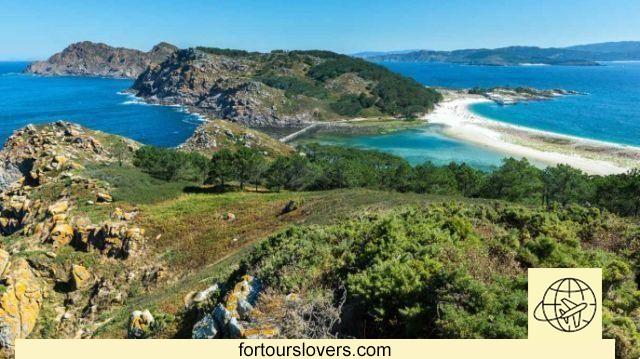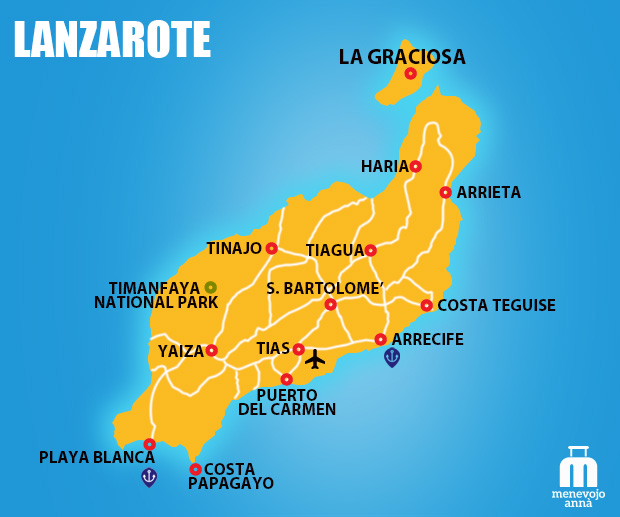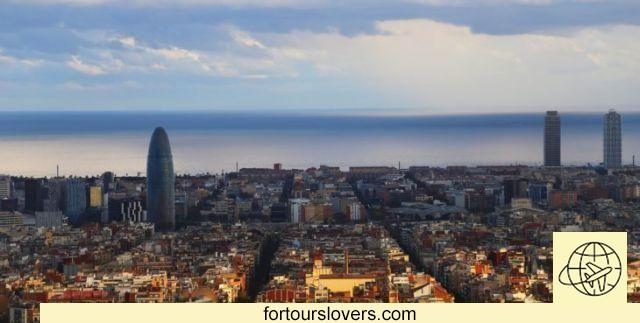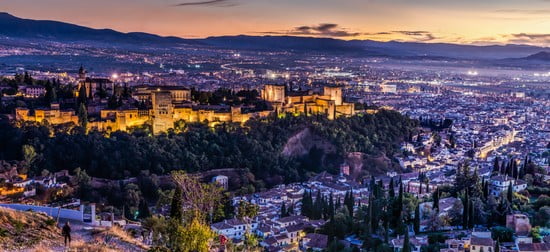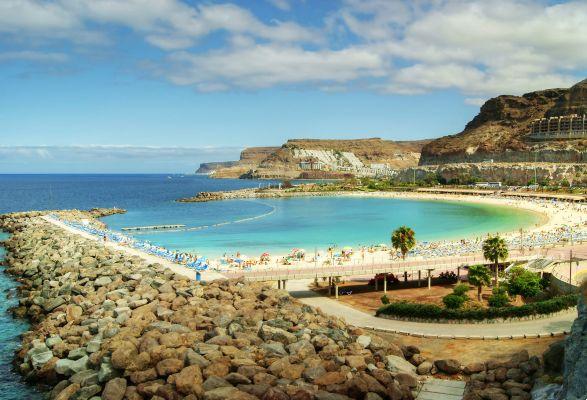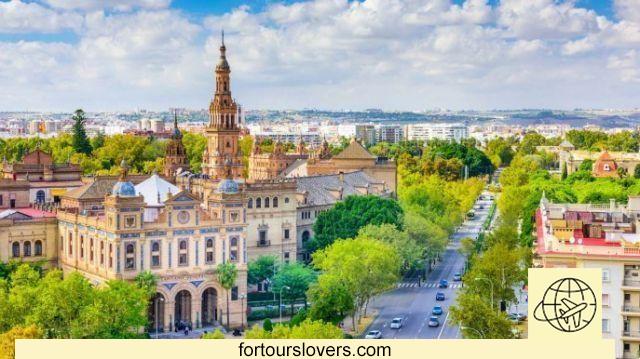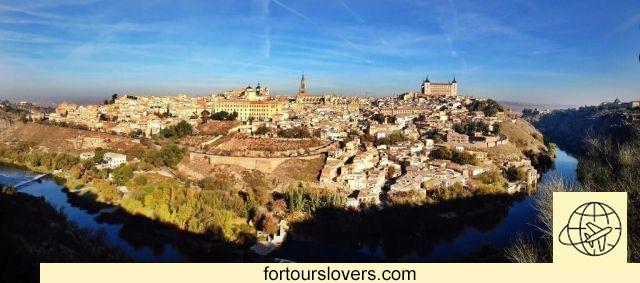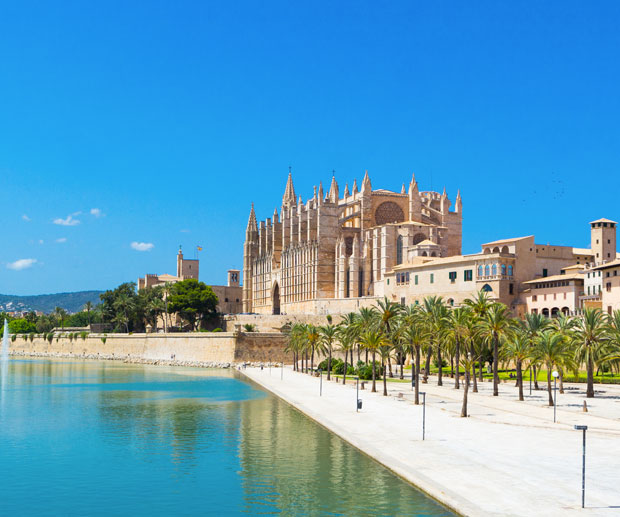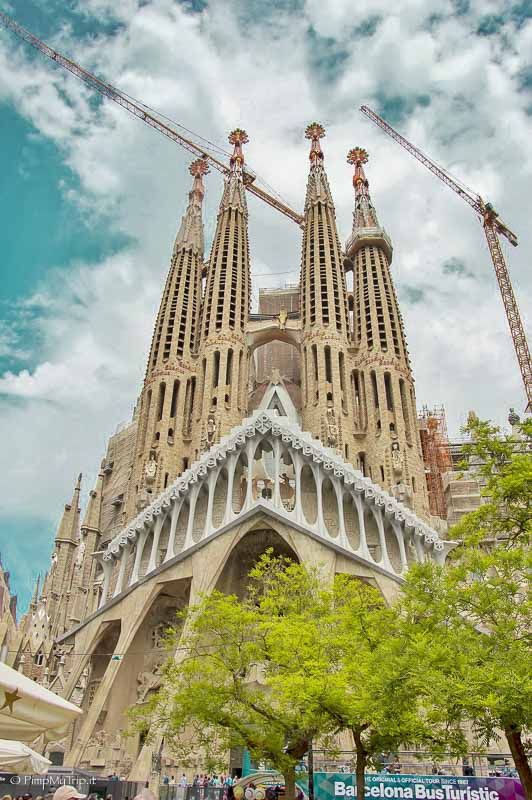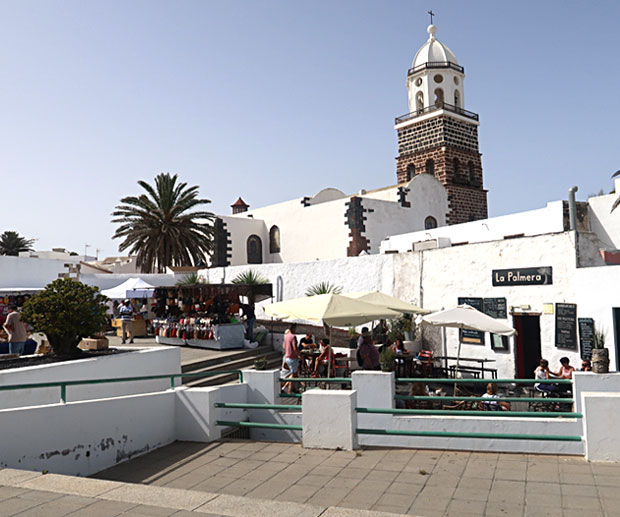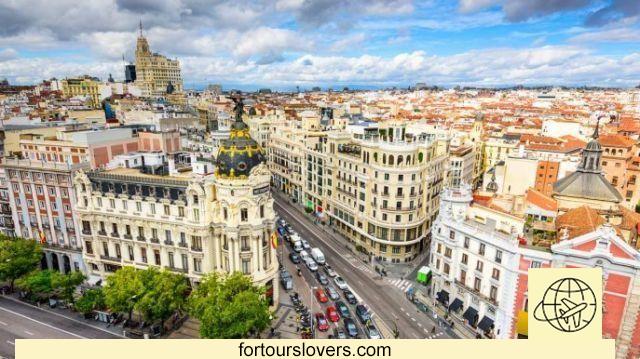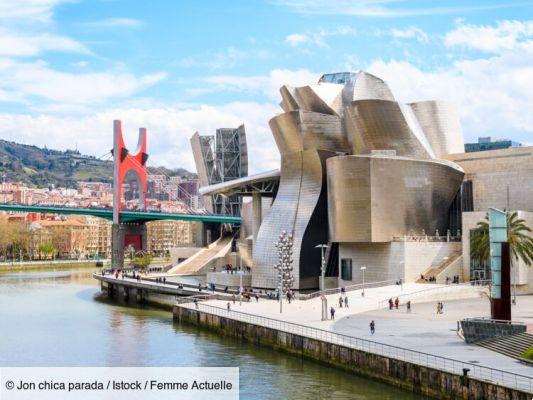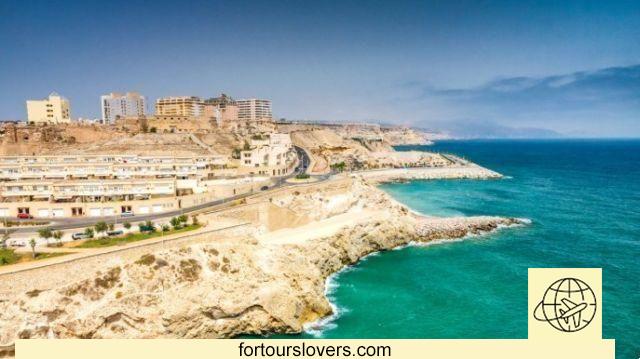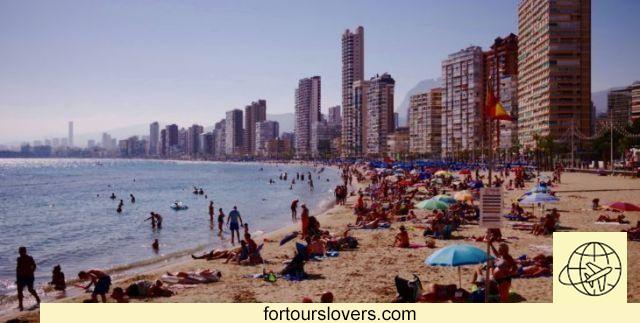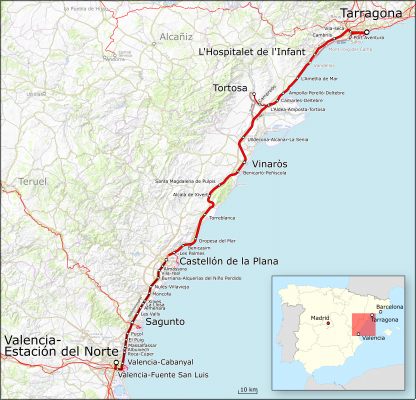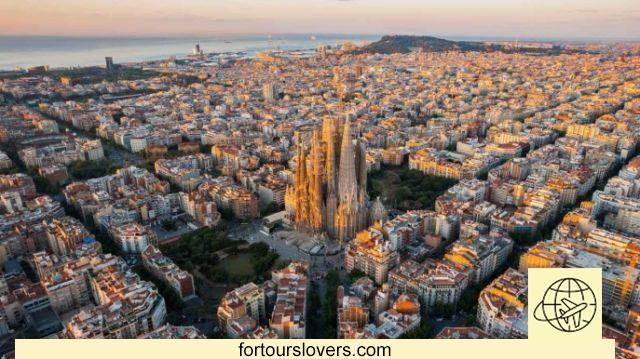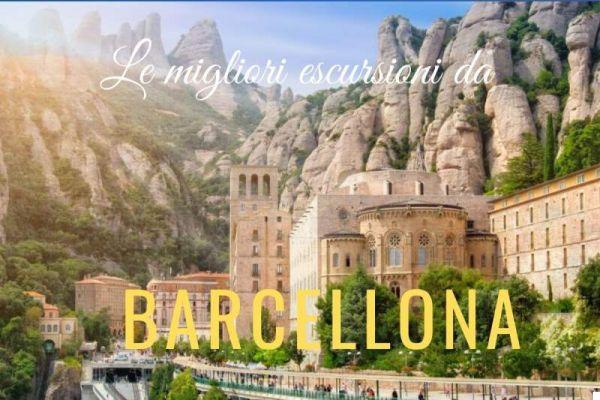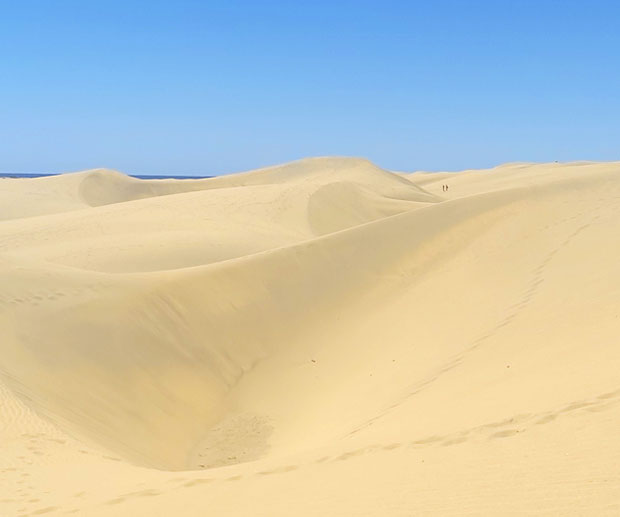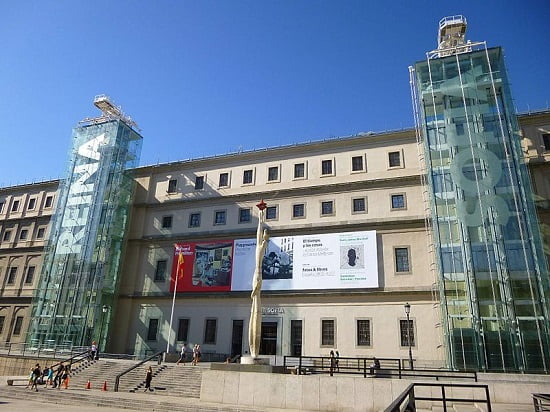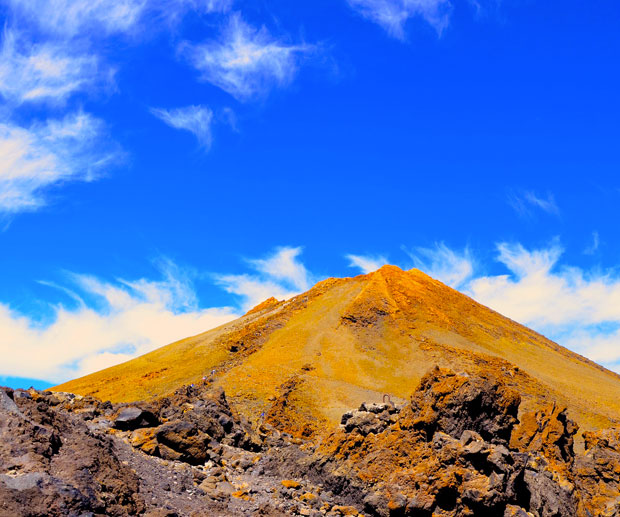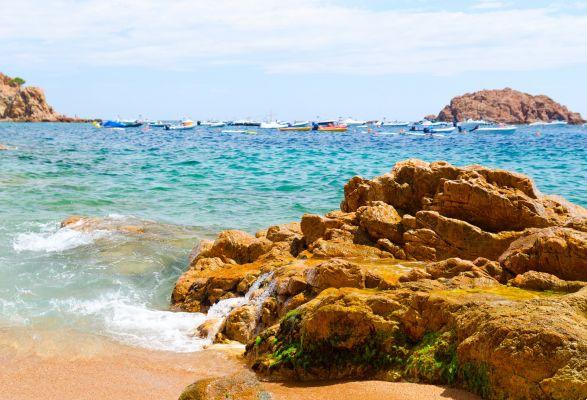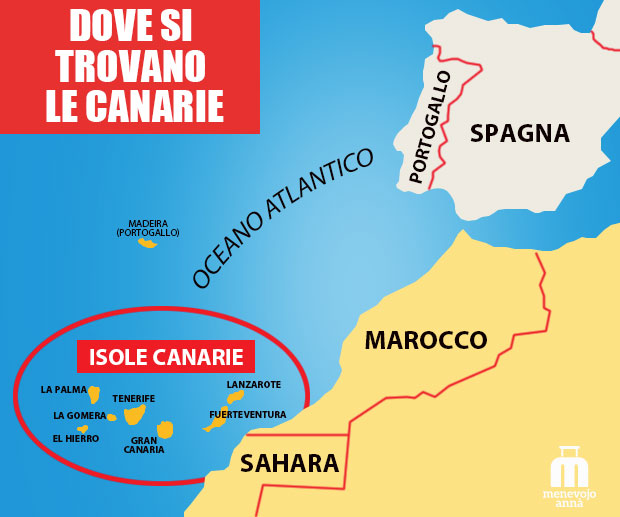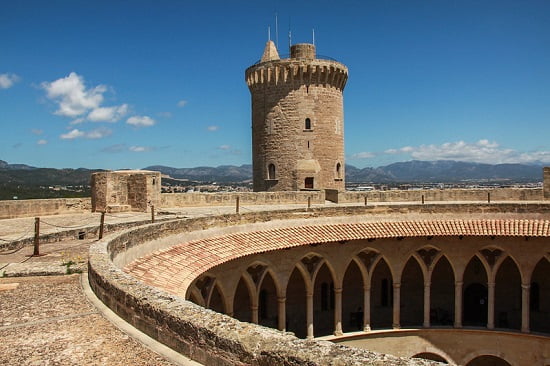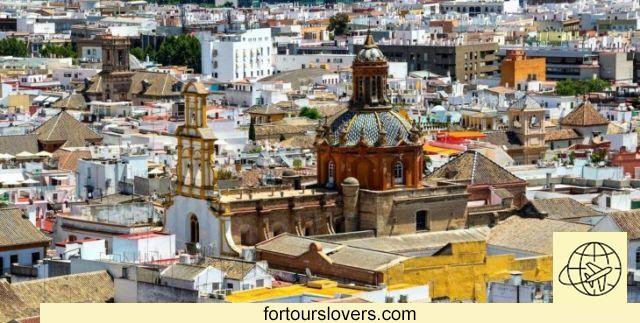
Seville
11 things to do and see in Seville and 2 not to doUnlike Valencia, which also financed the company, Seville, thanks to discovery of America gained prestige and fame by being accredited as main airport for ships that were facing the crossing of the Atlantic. Not that she was poor before the Columbus mission. On the other hand, how could a city that had lived there over the centuries be Phoenician, Roman, Arab and Christian dominations. Each of these phases, in fact, has left traces in the architecture, urban planning, toponymy and even in the way of life of the Andalusian city. Even today, much of its charm lies in the millennial history; the other part, however, resides in very benevolent climate and in want to party of the inhabitants. In short, a mix of beauty and feeling to which it is impossible to remain indifferent. Below we see together the main attractions of Seville. Happy reading.
1 The Cathedral
UNESCO World Heritage Site since 1987, the Cathedral of Seville is almost always the starting point for a visit to the city. The imposing building, second in size only to St. Peter's Basilica in Rome and St. Paul's Cathedral in London, functions as a sort of magnet capable of attracting tourists to any part of the city they may be. Inside it is even more majestic than the outside suggests. It is enough to consider the length of the central nave, about 150 meters, to realize that you are in one of the most important temples in Christianity. Temple which, it should be remembered, was built on the remains of a mosque built by Almohads (under whose dynasty the Caliphate had been moved from Cordoba to Seville). If in size it is the third largest church in the world, from an architectural point of view, however, the Cathedral of Seville is an absolutely sui generis testimony. A mixture of styles that has no comparison elsewhere: from Gothic al mudejar, Via barocco e neoclassic. Very high times; huge windows; colorful mosaics; paints; sculptures; goldsmiths; fabrics and much more. Unmissable, the Cappella Maggiore (Capilla Mayor) and the Royal Chapel (Royal chapel). The first is located in the center of the church and houses an altarpiece of over 200 square meters; the second, on the other hand, is located at the head of the building and contains the tombs of the kings who had the deepest ties with the city. Obviously, starting with Ferdinand III of Castile, the architect of the expulsion of the Moors. It is not over, because inside the Cathedral there are two other points that deserve to be explored: the coverage, which can be visited for some years (even if the visit is not suitable for everyone); and the Giralda Tower which we will discuss in more detail in the next point. For more information on the history, times and methods of visiting consult the Official site: www.catedraldesevilla.es.
2 Giralda Tower
Speaking of the Cathedral we mentioned that it is visible from all over the city. In reality, the note refers to his Bell tower, the beautiful Giralda, ancient minaret of the Almohad mosque built starting from 1156 on behalf of caliph al Mansour. It is one of the most famous Arab monuments in the world, twin of the minarets of Rabat and Marrakech and has preserved its Moorish imprint even after the victory of Ferdinand III of Castile who in 1248 returned Seville to Christianity. Climb up on top (104 mt.) della Torre della Giralda is a bit tiring but it's worth it. At the end of a long and wide flight of stairs, designed so that the muezzin could get on top on horseback, the most beautiful view of the historic center of Seville. As for the visiting hours, they are the same as those of the Cathedral of Santa Maria. to know more: La Giralda.
3 Real Alcazar
The Cathedral isn't the only building in Seville below UNESCO protection. Even the Real Alcazar it is and, once visited, one realizes the inevitability of recognition. This fortress, since Roman times, has been the center of municipal power. It continued to be so with the Visigoths, during the long Arab season, and subsequently with the Castilian domination. From an architectural point of view, the greatest contribution comes from synthesis of the two Muslim and Christian cultures. An emblematic example of this hybridization is the Palacio del Rey Don Pedro I. Built between 1356 and 1366, this royal residence is a triumph of Hispanic-Moorish style o mudejar. The Patio of the Maidens (Patio de Las Dancelles) and Patio of the Dolls (Patio de las Munecas) they are the most representative rooms of this style from which, in truth, the greater fidelity to the Muslim tradition of the local workers in charge of the construction of the building is evident. Different speech for the Gothic Palace (Palacio Gotico) wanted by Alfonso the Wise. The difference is not so much due to the greater antiquity of this wing of the fortress (dating back to the mid-thirteenth century), as to the reconstruction following the 200 earthquake which, albeit with its epicenter in Lisbon, also caused a lot of damage to Seville. The reconstruction, in fact, took place following the dictates of the baroque of the eighteenth century. Lesson that also returns in other parts of the Real Alcazar, together with typically Renaissance contributions. In short, a mix of different architectural styles harmoniously combined which, together with the gardens, fountains and countless others glimpses make the visit enjoyable even for those who lack knowledge of art history.
For the visiting hours see the table.
| Months / Days | Oct-Mar | Apr-Sep |
| Mon-Sun | 09:30 17:00 |
09:30 19:00 |
For more information consult the place: www.alcazarsevilla.org
4 Archive of the Indies
As we mentioned at the beginning, Seville, after the discovery of America, greatly increased its commercial power. In a first phase, the transactions between wholesalers and purchasersi took place on the stairs of the Cathedral, but the need soon arose to create a specific building for the purpose. Thus was born Lonja de Mercaderes (House of the Merchants) within walking distance of the Cathedral and the Alcazar. Unlike these structures, however, the Lonja de Mercaderes mirrored it Renaissance style of the '500, and it is precisely the different stylistic code that led theUNESCO international convention against doping in the sport to include this third building among the sites under protection. In addition to the architectural motivation, however, there is a historical one: this building, in fact, in the eighteenth century changed its intended use. No longer a business place, but the headquarters ofArchive of the Indies (General Archive of Indias). Two centuries after the discovery of America it was time to rationalize all the archival material accumulated in the meantime and this two-story building in Avenida de la Constitucion it lent itself well to the purpose. Map, maps, travel notes (including the autographed texts of Columbus, Magellan, Cortés and other adventurers) are here cataloged and preserved according to the most modern archival criteria. Therefore the visit to the Archive of the Indies of Seville is a visit of great historical and cultural interest, a must for fans of the events of Christopher Columbus.
For the visiting hours see the table.
| Months / Days | 16 Sep-15 Jun | 16 Jun-15 Sept. |
| Mon - Fri | 08:00 15:00 |
08:00 14:30 |
For more information visit the place: Archivo General de Indias
5 The Town Hall of Seville
Among the buildings of historical interest of Seville, the municipality. THE'Town hall, in fact, it is a Renaissance building, whose peculiarity lies in the refinement of the external decorations, especially those of the facade overlooking Plaza de San Francisco. We are in the presence of one of the most significant testimonies of that Plateresque style which throughout the XNUMXth century spread to the American colonies and Mexico. A style that comes from fusion of Gothic, Renaissance and Hispano-Moorish elements and which in Italy is found in the Baroque religious architecture of Lecce. If desired, theCity of Seville it can also be visited inside. More information on the Official site: www.sevilla.org.
6 Museum of Fine Arts
After the Prado Museum in Madrid, the Museu de Bellas Artes de Sevilla and the second most important art gallery in Spain. It is located in Plaza del Museo, in a somewhat secluded position from the hustle and bustle of the historic center, but in any case easily accessible. Its foundation dates back to 1836. In that year, in fact, the central government ordered a series of expropriations of works of art from monasteries and convents. Part of these merged into another former convent (Merced Calzada) built in the early 600s byarchitect and sculptor Juan de Oviedo. And, in fact, in addition to the countless pictorial testimonies present, the architectural features of the building must also be included among the fascinating reasons of the museum, among the most significant examples Andalusian mannerism. Returning to painting, great prominence is given to the works of Bartolomè Esteban Murillo, Juan de Vales Leal e Francisco de Zubaran, the most authoritative interpreters of the so-called "School of Seville" pictorial current of the seventeenth century in which they converge Renaissance and Baroque themes. Of course it is not over because the museum, divided into 14 rooms, also houses medieval masterpieces and works from the XNUMXth, XNUMXth and XNUMXth centuries. In short, one complete overview from the Middle Ages to the modern age which greatly enriches the cultural offer of Seville. Not to be missed!
For the orari di apertura see the table.
| Days / Months | 1 Sep - 30 June | 1 Jul - 31 Aug |
| Mon | closed | closed |
| Tue-Sat | 09:00 20:00 |
09:00 15:00 |
| Sun | 09:00 15:00 |
09:00 15:00 |
For more information on the history, prices (free for citizens of the European Union) and how to visit click here.
7 Metropol Parasol
To make the center of Seville unique there are not only the historical buildings we have focused on so far. To see, in Plaza de La Encarnacion, there is also the Metropol Parasol, the largest wooden structure in the world. The municipality of Seville wanted to build it, eager to enhance the area of the old city market after long years of substantial abandonment. In 2005, therefore, work began on this multifunctional structure designed byGerman architect Jurgen Mayer. However, the locals from the beginning preferred to call this building in another way, namely "Las Setas de la Encarnacion ". Las Setas means "The Mushrooms", to underline the wavy shape - like mushrooms, in fact - of mega parasols in micro-laminated wood who draw this whole mammoth five-story building. At the first stands theantiquarium, archaeological area with ancient finds Hispalis, the Roman city. Immediately after there is thetourist information area and access to lifts which lead instead to the Observation tower panoramic terrace which offers a magnificent view of the Andalusian capital. In between, the new municipal market it's a restaurant with hundreds of seats. It must be said that the judgment on the work is not unanimous. Seville residents struggle to put this hyper-modern structure on the same level as the Cathedral and the Alcazar. The tourist numbers, on the other hand, tell something else. Since 2011, the year of its inauguration, it has been a growing in visits. Sign of a successful operation at least from a commercial point of view. For more information visit the place: setasdesevilla.com.
8 Basilica de la Macarena
The church heritage of Seville is so rich and varied that it deserves a separate discussion. In fact, there are not only the architectural details to be explored, but also the historical-religious ones which, in the case of the Andalusian capital, revolve around the decisive role of the Brotherhoods (Hermanidades). Confraternities that are the absolute protagonists of the celebrations of the Semana Santa (from Palm Sunday to Easter Sunday), during which the city is crossed by a large religious ferment which also works from tourist attraction. In Basilica de la Macarena (from the name of the homonymous neighborhood) the most revered statue of the city is kept. We are talking about the Virgin of Hope (Virgen Esperanza) anonymous sculpture of the '600 that the inhabitants of Seville affectionately call "guapa" (see photo). The statue, until 1936, was kept in the church of San Gil, which was then destroyed by a fire that broke out during the civil war between nationalists and republicans. Following the event it was necessary to build a new temple and so they marched quickly (from 1941 to 1949) to build the new church built in the Baroque style. Not far from the Basilica is the brotherhood museum. Numerous are kept inside ex voto (many of which donated by Sevillian bullfighters), in addition to the silver platform used to carry the statue in procession to the Cathedral during the Easter celebrations. To be seen! For more information on the history and heritage of the brotherhood visit the Official site: www.hermandaddelamacarena.es.
9 Triana district
The most authentic barrio in Seville. This is the prevailing opinion towards Triana, the neighborhood on the opposite bank of the Guadalquivir, the river that runs through the city. At the base of such a flattering judgment there are several factors: the history, first of all, being an ancient Roman settlement (Triana derives from Traiano, the emperor who founded the colony); secondly the religion, since they were born here Santa Rufina e St. Just, patron of the city (martyred by the Romans themselves in the third century AD); finally the flamenco, this being the neighborhood where some of the most important schools are located (ballaores) from all over Spain. But that's not all, because Triana is many other things: here, in fact, there is the market most characteristic of the whole city and that is always here Castle of St. George which for several centuries was the seat of the Holy Inquisition. Also in Triana, moreover, we find the ancient Church of Santa Ana, the first church to be built after the expulsion of the Moors, and the Triana Ceramics Center, an exhibition space where the production process of the tiling, the colorful tiles in the ornamental heritage of the Iberian Peninsula. Last but not least the Ponte de Isabel II (see photo) which since 1852 has joined the two banks of the city. Often, to render the strategic importance of this work a parallel is made with the Chain Bridge which instead unites the two banks of Budapest. In short, the Neighborhood of Triana it is an unmissable stop on a visit to Seville. Moreover, according to most, you eat very well which is never a secondary detail.
10 Parque de Maria Luisa
Maria Luisa Fernanda of Bourbon, Jean Claude Forestier e Anibal Gonzales: it is thanks to these three personalities that Seville can boast one of most beautiful public gardens in Spain, not by chance declared Property of National Interest by the government of Madrid. The history of this park begins in 1893 with the donation to the city by the Duchess of Montepensier (Maria Luisa Fernanda di Borbone) of almost all the surrounding land Sant'Elmo Palace (Palacio de Sant'Elmo), seat of the Andalusian government. The municipality did the rest by giving a mandate in 1911 to the French landscape architect Jean Claude Forestier to design the garden. However, the outbreak of the First World War slowed down the project which resumed only after the end of the conflict under the direction of Anibal Gonzales Ivarez-Ossorio. The latter, for Seville, had the same importance as Antoni Gaudi for Barcelona. Gonzales was responsible for the design of the beautiful ones Spain Square (see photo) e Plaza de America. The first represents the heart of the Parque de Maria Luisa and from an architectural point of view constitutes a very successful mix of Renaissance and Baroque elements. Among other things, a bronze statue of the great architect stands out on this square, which was the visiting card of the 1929 Universal Exposition (EXPO) which took place in Seville. Plaza de America, on the other hand, houses two other buildings of great historical and cultural interest: the archaeological Museum, which architecturally recalls that Plateresque style which we have mentioned about the Town Hall; and the Museum of Popular Arts and Costumes which instead is inspired by Gothic-Mudejar Alcazar and other city buildings. Also not to be missed is a visit to the tower of Gold, from whose terrace you can enjoy a wonderful view of the city. It is a defensive outpost built by the Almohad dynasty to protect the city port. After the Reconquista of Ferdinand III of Castile, other architectural details were added which, however, did not erase the original Moorish imprint. Finally a piece of advice. Considering the size of the park (approx. 22 hectares) it is impossible to walk around it, at least in one go. On site, however, it is possible to rent a bike or take a carriage ride. Not to be missed!
11 Monastery of Santa Maria de las Cuevas
The Universal Exposition of 1929 that we mentioned when talking about the Parque de Maria Luisa was not the only one in Seville. Another one EXPO, in the 1992, relaunched the Andalusian capital giving it back the international dimension it deserved after the long period of Francoism and the difficult years of the democratic transition. As always happens in these cases, an event of this magnitude was accompanied by important urban transformation projects. The area most affected by the changes was The Charterhouse, part of the city squeezed between two arms of the Guadalquivir river and therefore improperly considered an island. Cartuja which means "Charterhouse" because in this clayey area, not far from the Barrio Triana, there was an ancient monastery now converted into Andalusian Center of Contemporary Art (CAAC). Despite the new use, the Gothic and Mudejar vestiges of Monastery of Santa Maria de Las Cuevas continue to represent an important part of the visit to the site where the great Christopher Columbus apparently used to stay. Not surprisingly, a gigantic one stands out in the garden of the former convent ombù, an American plant which - it is said - was planted by Fernando, one of the sons of the Genoese admiral, precisely to commemorate his father. But that's not all, because in addition to contemporary art and Andalusian architecture, this monastery, from 1839 to 1992, was converted into a ceramic factory. Or rather, in one of the most important ceramic factories in Andalusia. The English was responsible for the initiative Charles Pickman which revolutionized the production processes of azulejo ceramic exporting its fame beyond the borders of the Iberian Peninsula.
For the orari di apertura of Andaluz Center of Contemporary Art see the table.
| Days | Working Time |
| Mon | closed |
| Tue-Sat | 11:00 21:00 |
| Sun | 10:00 15:30 |
For more information consult the Official site: www.caac.es (English version available)
1 Better to avoid summer
Da mid June to September forwarded the temperature in Seville it is constantly maintained above 30 ° C with various peaks above 40 ° C. Obviously, therefore, that if you suffer from the heat and the sun,summer is not the best time to visit the city. Much better the spring months or, alternatively, autumn. The winter months, on the other hand, despite being mild, are very rainy, which objectively limits the possibility of moving. Separate speech for the Semana Santa and the Feria de Abril. These are the two most prestigious events for the city and taking part in them is certainly a source of great charm. In this case, however, it is advisable to book with a good margin in advance, also making an estimate that the cost of the accommodation facilities increases compared to other periods of the year.
2 Watch out for pickpockets
The same precautions that we have highlighted many times in previous articles apply to Seville: avoid running around with a lot of cash behind; leave the bag unattended at a bar table; keep the wallet in the back pocket of your pants or wear watches, chains, bracelets of great value. Especially in crowded areas, where there is a great coming and going of people, the respect of these precautions protects from unpleasant surprises. Also beware of shooting in the middle of the night. Beyond these aspects, which are common to almost all major European cities, Seville is an absolutely quiet place. So don't worry and have a good holiday!




